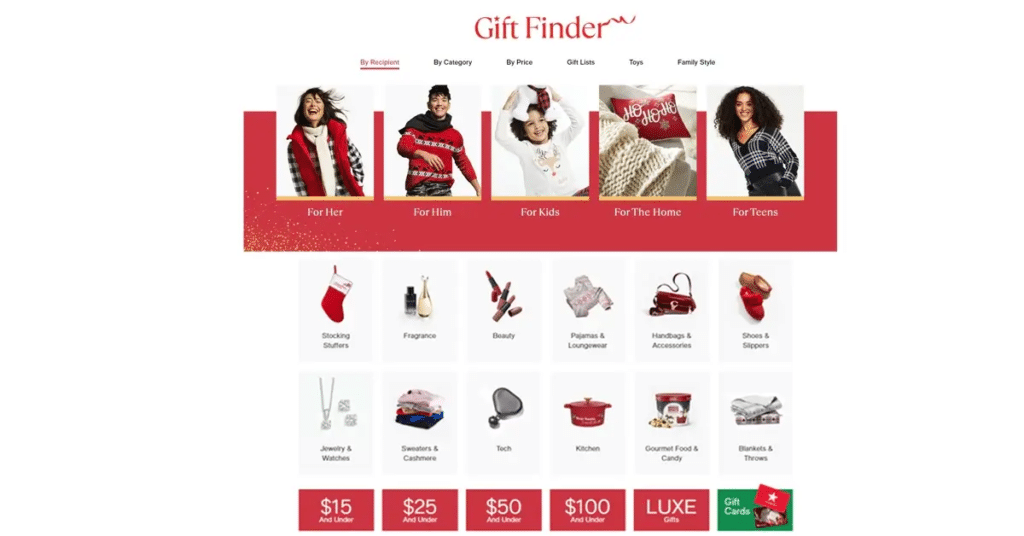The holiday season is a time when businesses amp up their marketing efforts to capture the attention and wallets of consumers. However, in a sea of generic holiday campaigns, it can be a challenge to stand out from the crowd. That’s where personalization comes in. By tailoring your marketing strategy to the individual needs and preferences of your target audience, you can elevate your holiday marketing game to a whole new level.
Personalization allows you to create a more meaningful and engaging experience for your customers. Whether it’s through personalized emails, targeted ads, or customized product recommendations, the power of personalization lies in its ability to make customers feel seen and understood. This not only increases the chances of conversion but also fosters brand loyalty.
In this article, we will explore how personalization can take your holiday marketing strategy from cookie-cutter to cutting-edge. We’ll dive into the various ways you can incorporate personalization into your campaigns, the benefits it brings, and some expert tips to help you get started. Get ready to take your holiday marketing to new heights with the power of personalization.
The importance of personalization in holiday marketing
In today’s digital age, customers are bombarded with countless marketing messages. To cut through the noise and make a lasting impression, businesses need to go beyond generic campaigns and deliver personalized experiences. Personalization is not just a nice-to-have; it’s a must-have in today’s competitive landscape.
One of the key reasons why personalization is so important in holiday marketing is that it helps businesses understand their target audience better. By analyzing customer data and gaining insights into their preferences and behaviors, businesses can tailor their marketing messages to resonate with their target audience on a deeper level.
Understanding your target audience
Before you can begin personalizing your holiday marketing campaigns, you need to have a deep understanding of your target audience. This goes beyond demographics and includes factors such as their interests, pain points, and purchasing behaviors. The more you know about your audience, the better you can tailor your marketing messages to meet their specific needs.
To gain a better understanding of your target audience, you can start by conducting market research. This can involve surveys, focus groups, and analyzing customer data. By gathering data on your existing customers, you can identify patterns and trends that will help you create more targeted and personalized campaigns.
Collecting and analyzing customer data
Collecting and analyzing customer data is a crucial step in the personalization process. This data can come from various sources, including website analytics, social media insights, and customer relationship management (CRM) systems. By gathering data on customer interactions and behaviors, you can gain valuable insights into their preferences and tailor your marketing messages accordingly.
There are several tools and platforms available that can help you collect and analyze customer data. These tools can provide you with valuable information such as customer demographics, purchasing behaviors, and even browsing patterns. By leveraging this data, you can create more personalized campaigns that resonate with your target audience.
Creating personalized content and offers
Once you have a deep understanding of your target audience and have collected and analyzed customer data, it’s time to start creating personalized content and offers. Personalized content goes beyond simply addressing the customer by their name; it’s about delivering relevant and valuable information that speaks directly to their needs and interests.
When creating personalized content and offers, it’s important to consider the customer’s journey. This includes understanding where they are in the buying process and what information they need at each stage. By delivering the right content at the right time, you can guide customers through the sales funnel and increase the chances of conversion.


Implementing dynamic email marketing campaigns
Email marketing is a powerful tool for personalization. By segmenting your email list based on customer data and preferences, you can deliver targeted messages that are highly relevant to each individual. This can include personalized product recommendations, exclusive offers, and tailored content.
To implement dynamic email marketing campaigns, you can use email marketing automation tools that allow you to set up triggers and rules based on customer behavior. For example, if a customer abandons their shopping cart, you can send them a personalized email with a special discount code to incentivize them to complete their purchase.

Utilizing personalization in social media advertising
Social media advertising provides businesses with a unique opportunity to reach their target audience in a highly personalized way. Platforms like Facebook and Instagram allow you to create custom audiences based on customer data, interests, and behaviors. This enables you to deliver targeted ads that are tailored to each individual’s preferences.
To utilize personalization in social media advertising, you can create different ad sets for each segment of your audience. This allows you to deliver personalized messages and offers that resonate with each individual. By testing different variations of your ads and monitoring their performance, you can optimize your campaigns for maximum effectiveness.

Customizing website experiences for individual users
Your website is the online storefront of your business, and it’s where customers go to learn more about your products or services. By customizing the website experience for individual users, you can create a more personalized and engaging experience that keeps them coming back for more.
There are several ways you can customize the website experience for individual users. This can include displaying personalized product recommendations based on their browsing history, offering live chat support to answer their questions in real-time, or even tailoring the website layout and design to match their preferences.

Leveraging personalized retargeting ads
Retargeting ads are a powerful tool for personalization. These ads target customers who have previously interacted with your brand but have not yet made a purchase. By delivering personalized retargeting ads, you can remind these customers of the products they were interested in and incentivize them to complete their purchase.
To leverage personalized retargeting ads, you can use platforms like Google Ads or Facebook Ads that allow you to create custom audiences based on customer behavior. By delivering personalized ads that showcase the products the customer was interested in, you can increase the chances of conversion and drive more sales.
Measuring the effectiveness of personalized campaigns
To ensure the success of your personalized holiday marketing campaigns, it’s important to measure their effectiveness. This involves tracking key metrics such as conversion rate, click-through rate, and return on investment (ROI). By monitoring these metrics, you can identify what is working and what needs improvement.
There are several tools and analytics platforms available that can help you measure the effectiveness of your personalized campaigns. These tools provide valuable insights into customer behavior, campaign performance, and overall ROI. By regularly analyzing this data, you can make data-driven decisions to optimize your campaigns and drive better results.
Conclusion: The future of personalized holiday marketing strategies
As the holiday season becomes increasingly competitive, businesses need to find ways to stand out from the crowd. Personalization is the key to cutting through the noise and delivering a more meaningful and engaging experience for customers. By understanding your target audience, collecting and analyzing customer data, and creating personalized content and offers, you can elevate your holiday marketing strategy to new heights.
From implementing dynamic email marketing campaigns to utilizing personalization in social media advertising, there are countless ways to incorporate personalization into your holiday marketing efforts. By customizing website experiences, leveraging personalized retargeting ads, and measuring the effectiveness of your campaigns, you can ensure that your personalized strategies drive results.
The future of holiday marketing lies in personalization. As technology continues to advance and customer expectations evolve, businesses that embrace personalization will have a competitive edge. So this holiday season, go beyond cookie-cutter campaigns and embrace the power of personalization to elevate your marketing strategy and create lasting connections with your customers.